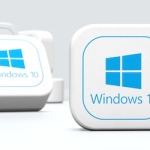Dean Swenson September 13th, 2018 Blogs No Comments
The evolution of technology in the workplace is supposed to make us more productive, allowing us to have meetings with anyone–anywhere in the world–with the simple click of a button.
The challenge is that these advancements in technology have sent the workplace into meeting overload. According to a Salary.com survey, nearly half of the employees surveyed attributed meetings to be the biggest productivity drainer. Fortunately, you can change this mindset by embracing these best practices for holding more productive meetings:
- Hold meetings in reverse order. Typically, meetings begin by providing some background and then move into discussing the important issues. By the time the desired outcomes are being discussed, many employees have mentally checked out of the meeting. To help your meetings be more effective, reverse the order and begin by discussing the desired outcomes.
- Use an agenda. Using an agenda to run your meeting will help to ensure that all critical points are discussed and will keep your meeting on task. As a best practice, email the agenda to participants prior to the meeting. During your meeting, engage participants by asking for feedback for each of the bullet points on the agenda. Determine a plan of action before moving on to the next point on the agenda.
- Recap your meeting. Reinforce the points discussed in your meeting by emailing a recap that identifies the actions that need to be taken, the person responsible for each action, and the due dates for each action. Sending out a recap of your meeting will help to hold employees accountable and will allow you to track progress over time.
- Include only those that need to be present in the meeting. “The more, the merrier” should not be the motto for your meetings. Limiting the number of participants will allow you to lead more productive meetings.
- Host a “stand-up” meeting. Research shows that stand-up meetings move 25 percent faster and help participants to reach decisions 34 percent sooner.
- Consolidate your meeting into 50 minutes (or less). You should not need a full hour for your meeting. By limiting your meeting to 50 minutes, you’ll leave time at the end for participants to review action items, ask questions, and discuss the next steps.
By being more strategic with your meetings, you’ll realize significant gains in productivity.
Subscribe to our Blog
What is a Document Management System?
A beginner's guide to managing documents from paper to intelligent automated workflows.
FREE DOWNLOAD

7 Avoidable Mistakes Most IT Managers Make
Popular eBook for IT leaders and Business Owners.
GET YOUR COPY





